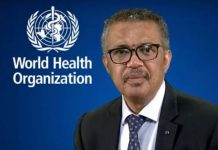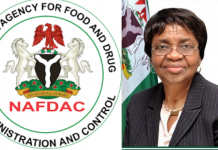The International Air Transport Association (IATA) yesterday announced passenger data for September 2022 showing that African airlines recorded 90.5 per cent growth during the period.
However, it said all markets, reported strong growth, led by Asia-Pacific.
“African airlines saw a90.5 per cent rise in September RPKs versus a year ago. September 2022 capacity was up 47.2 per cent and load factor climbed 16.7percentage points to 73.6 per cent, the lowest among regions,” IATA stated.
Statistics from the other regions showed that Asia-Pacific airlines saw a 464.8 per cent rise in September traffic compared to September 2021, the strongest year-over-year rate among the regions.
Capacity rose 165.3 per cent and the load factor was up 41.5 percentage points to 78.3 per cent.
European carriers September traffic climbed 78.3 per cent versus September2021. Capacity increased 43.8 per cent, and load factor moved up 16.3 percentage points to 84.1 per cent, second highest among the regions.
Middle Eastern airlines posted a 149.7 per cent traffic rise in September compared to September 2021. September capacity increased 63.5 per cent versus the year-ago period, and load factor climbed 27.6 percentage points to 80.0 per cent.
North American carriers had a 128.9 per cent traffic rise in September versus the 2021 period. Capacity increased 63.0 per cent, and load factor climbed 24.6percentage points to 85.4 per cent, which was the highest among the regions for a fourth consecutive month.
Latin American airlines’ September traffic rose 99.4 per cent compared to the same month in 2021. September capacity climbed 73.7 per cent and load factor increased 10.8 percentage points to 83.5 per cent.
The results from domestic passenger markets showed that Japan’s domestic RPKs rose 127.9 per cent in September and are now at nearly 75.6 per cent of 2019 levels.
US domestic traffic climbed 16.8 per cent in September compared to September 2021, pushing it to 0.4 per cent above the September 2019 level. The 85.4 per cent load factor was the highest among the domestic markets.
In summary, IATA said the total traffic in September 2022 (measured in revenue passenger kilometers or RPKs) rose 57.0 per cent compared to September2021.
Globally, it reported that traffic is now at 73.8 per cent of September 2019 levels.
Domestic traffic for September2022 was up 6.9 per cent compared to the year-ago period. Total September2022 domestic traffic was at 81 per cent of the September 2019 level.
International traffic climbed 122.2 per cent versus September 2021, while September 2022 international RPKs reached 69.9 per cent of September 2019 levels.
“Even with economic and geopolitical uncertainties, the demand for air transport continues to recover ground. The outlier is still China with its pursuit of a zero COVID strategy keeping borders largely closed and creating a demand roller coaster ride for its domestic market, with September being down 46.4 per cent on the previous year. That is in sharp contrast to the rest of Asia-Pacific, which, despite China’s dismal performance, posted a 464.8 per cent increase for international traffic compared to the year-ago period,” IATA’s director general, Mr. Willie Walsh, remarked.
He added: “Strong demand is helping the industry cope with sky high fuel prices. To support that demand in the long-term, we need to pay attention to what travelers are telling us.
“After nearly three years of pandemic travel complexity, IATA’s 2022 global passenger survey (GPS) shows that travelers want simplification and convenience. That’s an important message for airlines but also for airports and governments. They own many of the facilitation processes that let passengers down at some key airports over this year’s northern summer travel season.
“According to the GPS, a majority of passengers want to use biometric data rather than passports for border processes. And 93 per cent of passengers are interested in trusted traveler programs to expedite security screening. Modernising the facilitation experience will not only help alleviate the choke points, it will create a better experience for all.”


























































